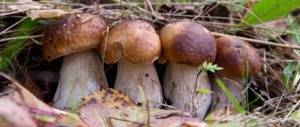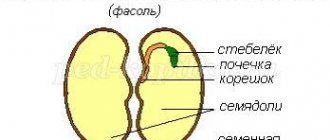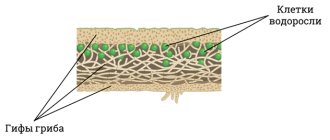Biology - the science of living nature
All living things on our planet are united by living nature, the study of which is the science of biology.
The definition of “Biology is the science of living nature” originated in ancient times. Translated from Greek, bios is life, and logos is teaching.
The concept of “biology” includes not one, but a whole set of sciences that study the organic world of the planet. The system of biological disciplines includes:
- Botany – studies the plant world;
- Zoology – studies the animal world;
- Anatomy – studies the structure of human organs;
- Mycology – studies the kingdom of mushrooms;
- Bacteriology – deals with the study of bacteria;
- Virology – studies viruses;
- Cytology – studies the vital activity and structure of cells;
- Genetics – pays attention to the variability and heredity of living organisms;
- Ecology – studies the relationships between organisms and their impact on the environment.
Rice. 1. Biological sciences.
All living organisms on the planet are conventionally divided into kingdoms. There are four of them in nature:
- Bacteria;
- Mushrooms;
- Plants;
- Animals.
Rice. 2. Kingdoms of living nature.
Viruses are considered a separate kingdom, since they do not have a cellular structure and live inside a living cell.
The human body belongs to the animal kingdom, since the functioning of human organ systems and cells is similar to animals.
Biology - the science of living nature
From childhood we get acquainted with the animal and plant world. And we often ask ourselves a lot of questions about how everything works. And in order to understand all the points, we need additional knowledge. The science of biology provides answers to all these questions and many others.
Biology ─ where did this name come from? From the Greek words: βίος means “life”, and λόγος ─ “teaching”. This means that biology is the science of life, of living organisms living on Earth.
Biology studies how organisms are structured, how certain organs work, how everything grows, develops, reproduces, where organisms come from and why they live in certain places on Earth. And many many others.
It is difficult to study all areas of biology at once. Therefore, a number of independent sciences and directions are distinguished.
For example, the science of virology studies viruses, microbiology deals with the study of microorganisms, mycology is the science of mushrooms, botany is the science of plants, zoology is the science of animals, anthropology is the science of humans.
Each of these disciplines is further divided into a number of sciences. For example, in zoology there are such sciences as entomology - the science of insects, ichthyology - about fish, theriology - about mammals, etc. In botany there are: algology - the science of algae, bryology - about mosses, dendrology - about woody plants, etc.
Biological sciences are closely related to physics, chemistry, mathematics, and geography. All of them are united not only by the subject of study - nature, but also by the methods used by researchers to find answers to all the questions posed.
The most common methods for studying biology are: observation (allows you to describe biological phenomena), another method ─ comparison (it makes it possible to find something in the structure and functioning of different organisms), experiment, or experience (helps to study the properties of biological objects in some certain conditions), modeling (allows you to simulate many processes that are difficult to observe), historical method (allows you to understand the processes of development of living nature).
So, you understand that biology is not a simple subject, but very interesting, since it lifts the curtains of many secrets that have interested people since ancient times.
People did not immediately find answers to the most complex questions. Biology developed gradually. In different parts of the planet in different centuries, scientists made the greatest discoveries. Their accumulated experience has reached us. And now, having studied biology, we can answer many questions.
And with the discovery of the microscope, fundamental changes occurred in science. A secret, unknown world was revealed to man.
Using a light microscope, you can see parts with a distance of up to 0.2 microns.
The microscope, as scientists often say, “has made a new world accessible to observation.” Microscopic observations, after the discovery of the living cell, forced a dramatic change in the view of the nature of matter.
The history of the discovery of the cell dates back to the time when the English scientist Robert Hooke in 1665, trying to understand why the cork tree floats well, began to examine thin sections of the cork using the microscope he improved.
He discovered that the cork was divided into many tiny cells, which reminded him of the honeycombs in honeybee hives, and he called these cells cells.
In 1674, the Dutch master Antonius van Leeuwenhoek, using a microscope, first saw ciliates ─ moving living organisms in a drop of water.
Let us also get acquainted with the microscopic world.
Let's look inside the watermelon, lemon, onion and tomato. Here is a ripe watermelon - a berry loved by many. Why berry?
From the point of view of botany (the science of plants), a berry is a juicy multi-seeded fruit. If the fruit has juicy pulp and a lot of seeds inside, you can rest assured that it is a berry (currants, gooseberries, grapes, for example).
If you look at a cut of a watermelon, you will notice many spherical bubbles - these are cells. In watermelon they are very large and visible through a magnifying glass.
If we look at cells under a microscope, we can see many cellular structures. This is the cell wall, the nucleus which contains most of the hereditary material. Cytoplasm is the semi-liquid content of the cell. We also observe a vacuole. The juice contained in the fruit is concentrated precisely in the vacuoles of the plant cell. We bite off a piece of watermelon, damaging the vacuole, and its contents - cell juice - flow out.
the onion skin under . To do this, we will prepare a microslide. First, let's take a clean glass slide. Wipe it with a clean napkin so that there are no streaks or fingerprints on it. Now put 1-2 drops of water on the glass slide. Take the onion and cut it lengthwise, remove the outer scales.
Using tweezers, carefully remove a small piece of transparent skin from the inner surface of the onion scales. Place a piece of peel in a drop of water. Using tweezers, place a cover slip on top. Let's look at the microspecimen under a microscope.
In order for the cellular structures to be clearly visible, we will stain the micropreparation with an iodine solution. Add 1 drop of iodine to the edge of the coverslip. Now let's look at the stained preparation first at low magnification. The microslide shows elongated cells tightly adjacent to one another. Now we can look at the cells at higher magnification.
We see a dense transparent shell with thinner areas - pores. Inside the cell there is a colorless semi-liquid content - the cytoplasm (stained with iodine). In the cytoplasm there is a small dense nucleus.
In almost all cells, especially in old ones, cavities - vacuoles - are clearly visible.
What are the cells of a lemon? Let's look at them through a microscope. To do this, make a thin slice of the pulp and place it in a drop of water on a glass slide.
Lemon cells are yellow due to pigments. It is the pigments that give organisms different colors. Cellular lemon juice is rich in citric, ascorbic and malic acids, which is why it is so sour.
And here is a microscopic specimen of tomato pulp. It has a red color ─ also due to pigments.
Tomato cells have the same cellular structures as the previous cells we looked at.
Are you wondering what green plant cells look like under a microscope?
Let's look at the Elodea leaf. Elodea is an aquatic plant. It produces long, highly branched stems that grow extremely quickly and often reach a length of more than two meters.
At low magnification we observe green round structures. These are chloroplasts. It is thanks to these small bodies that plants, in the presence of light, are able to produce oxygen, which is necessary for our existence.
At high magnification we see that the chloroplasts are moving. In fact, it is the cytoplasm that moves. Thanks to this, important substances are distributed inside the cell.
Let's look at the skin of a primrose leaf. What do we see? Some round pores. Indeed, these are the pores of the leaf, in botany they are called “stomata”, they are located on the lower or upper layer of the skin of the plant leaf, through which water evaporates and gases exchange with the environment.
Let's try to examine under a microscope not only the plant world, but also the animal world. This is a sample taken from the lake. Let's take a drop of water from its bottom and apply it to the object.
Here is a common amoeba . This is a small (0.2−0.5 mm), barely visible to the naked eye, colorless gelatinous organism, constantly changing its shape.
An amoeba consists of one cell, this cell is a whole organism leading an independent existence.
We watch how she captures food with the help of her prolegs. Thanks to a microscope, the world invisible to the eye becomes visible.
Now we will answer the questions that we asked at the beginning of the lesson.
Why are the flowers colored and the leaves green?
The fact is that leaves and flowers have different tasks. The leaves are green due to chlorophyll. We saw it under a microscope, on a microscope of Elodea.
Plant flowers serve to procreate. They are brightly colored to attract insects and other animals, which facilitate reproduction by carrying pollen from one plant to another.
The sweet scent of flowers also attracts insects and animals. This smell comes from nectar, a juice rich in sugars. It is a staple food for many insects.
There are also plants that can only be pollinated by one or two types of insects. For example, clover is “friends” only with bees and bumblebees - the structure of its flower is specially adapted to their proboscis.
Next question: why is the bee colored with black and yellow stripes?
Against a background of bright flowers, bees can be seen by insectivores. Therefore, their color is warning, bright, sharply contrasting with the surrounding background. Their bright colors thus acquire a generally understandable conventional meaning: “Do not touch - it’s poisonous!”
Warning coloration is also characteristic of other insects. For example, ladybugs are also bright, red, with black spots. If you have picked them up, you have probably noticed that they secrete an orange secretion that is poisonous. That's why birds don't peck them.
What does a hedgehog eat and why is it so prickly?
All of you have seen pictures of hedgehogs dragging apples on their needles. Hedgehogs eat apples, but not as often as is commonly believed.
The common hedgehog eats beetles, worms, larvae, slugs and snails, and other organisms.
In late autumn, hedgehogs hide in holes, burrow into leaves and hibernate. There are spines on the back, sides and head of the hedgehog. In an ordinary hedgehog they are short, no more than 3 cm. And if not for the sharp spines covering the back and sides of the hedgehog, it would quickly become a tasty prey for some predator.
In case of danger, the hedgehog curls up into a tight ball, covering its legs, muzzle and stomach with armor made of sharp needles. The only animal that poses a real danger to the hedgehog is the badger: with its long claws it can unfold the prickly ball and get to the belly, which is not protected by needles.
Living conditions on Earth
Living organisms live everywhere on the planet (water, air, land). The shell of the Earth in which the organic world lives is called the biosphere.
Rice. 3. Biosphere.
Conditions necessary for the normal functioning of all life on the planet:
- this is the ambient temperature that allows water in large quantities to remain in a liquid state;
- our planet has an ozone layer that reliably protects the planet from ultraviolet radiation from the Sun;
- With the help of sunlight, plants release oxygen and receive light energy, which they convert into chemical energy and transmit it to other organisms through the food chain.
What does biology study?
The most general definition is that biology studies living nature. The interests of this science include the origin of living beings, their development, way of life, interaction with each other and with the outside world.
Biological scientists are interested in life in all its manifestations, from the molecular level to the most complex biosystems.
One of the leading directions is the study of the origin of life: under what conditions and why did life originate on our planet? Is it possible to repeat this experiment?
Closely related to it is genetic engineering - the ability to artificially create new species of living beings that would have predetermined properties. So far, humanity has only taken its first steps in this area of biology. But the prospects here are truly stunning.
The study of bioecosystems is another relevant area of biology, which helps to understand the relationship between the life activities of a wide variety of creatures.
Rabbit
This is very important for planning future human actions on the planet. We must not only transform nature for our convenience, but also preserve it as pure and holistic as possible.
We must not allow the death of entire populations of living beings, as this impoverishes the gene pool of the Earth.
An extremely important area is human biology. This includes the creation of new drugs and methods for treating diseases, and the improvement of heredity, and the discovery of new human capabilities to increase his vitality and efficiency. Man is one of the most interesting objects for biologists to study.
The meaning of biology
Knowledge of biology underlies medicine and agriculture. Namely:
- Science can help solve food production problems. For this purpose, special varieties of high-yielding plant crops and animal breeds are developed.
- Release of new drugs to combat various viruses and diseases.
- Application of new biological technologies for the production of medicines, food products, fertilizers, preparations for the chemical and textile industries.
- Knowledge of the laws of biology will help to maintain an environmentally friendly environment, and thereby protect many species of plants and animals from extinction.
Biology at the Lyceum
Biology is the science of living nature.
Biology studies the diversity of living beings, the structure of their bodies and the functioning of their organs, the reproduction and development of organisms, as well as the influence of humans on living nature.
The name of this science comes from two Greek words “bios” - “life” and “logos” - “science, word”.
One of the founders of the science of living organisms was the great ancient Greek scientist Aristotle (384 - 322 BC). He was the first to generalize the biological knowledge acquired by humanity before him. The scientist proposed the first classification of animals, combining living organisms similar in structure into groups, and designated a place for humans in it.
Subsequently, many scientists who studied different types of living organisms inhabiting our planet made contributions to the development of biology.
Life Sciences Family
Biology is the science of nature. The field of research of biologists is enormous: it includes various microorganisms, plants, fungi, animals (including humans), the structure and functioning of organisms, etc.
Thus, biology is not just a science, but a whole family consisting of many individual sciences .
Explore the interactive diagram about the biological sciences family and find out what the different branches of biology study.
Anatomy is the science of the form and structure of individual organs, systems and the body as a whole.
Physiology is the science of the vital functions of organisms, their systems, organs and tissues, and the processes occurring in the body.
Cytology is the science of the structure and functioning of cells.
Zoology is the science that studies animals.
Sections of Zoology:
- Entomology is the science of insects.
There are several sections in it: coleopterology (studies of beetles), lepidopterology (studies of butterflies), myrmecology (studies of ants).
- Ichthyology is the science of fish.
- Ornithology is the science of birds.
- Theriology is the science of mammals.
Botany is the science that studies plants.
Mycology is the science that studies mushrooms.
Protistology is the science that studies protozoa.
Virology is the science that studies viruses.
Bacteriology is the science that studies bacteria.
The meaning of biology
Biology is closely related to many aspects of human practical activity - agriculture, various industries, medicine.
The successful development of agriculture today largely depends on biologists-breeders involved in improving existing and creating new varieties of cultivated plants and breeds of domestic animals.
Thanks to the achievements of biology, the microbiological industry was created and is successfully developing. For example, people obtain kefir, yogurt, yoghurt, cheese, kvass and many other products thanks to the activity of certain types of fungi and bacteria. Using modern biotechnologies, enterprises produce medicines, vitamins, feed additives, plant protection products from pests and diseases, fertilizers and much more.
Knowledge of the laws of biology helps to treat and prevent human diseases.
Every year people use natural resources more and more. Powerful technology is transforming the world so quickly that now there are almost no corners of untouched nature left on Earth.
In order to maintain normal conditions for human life, it is necessary to restore the destroyed natural environment. This can only be done by people who know the laws of nature well. Knowledge of biology, as well as the biological science of ecology , helps us solve the problem of preserving and improving living conditions on the planet.
Complete the interactive task -
< Previous page “What is a living organism?”
Next page “Methods for studying nature” >




